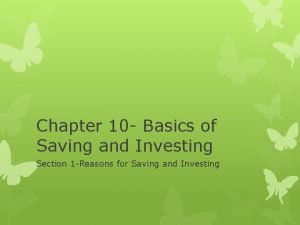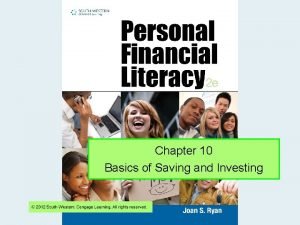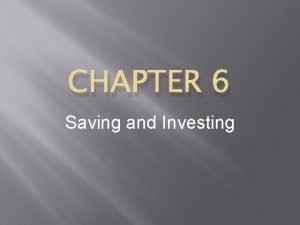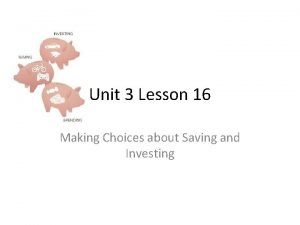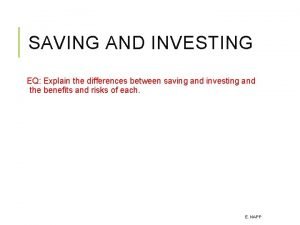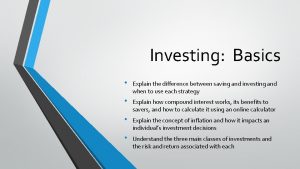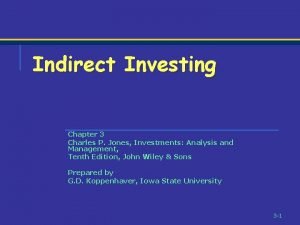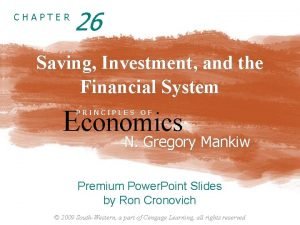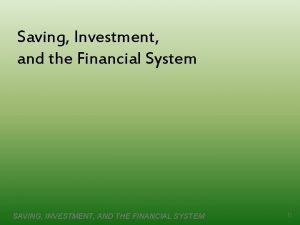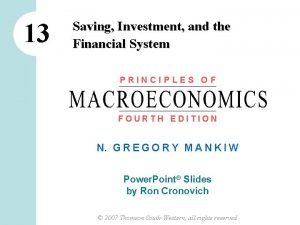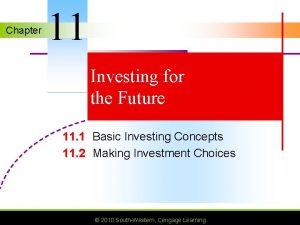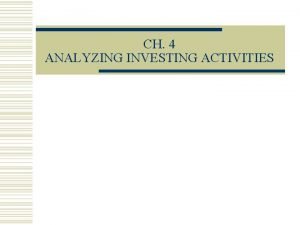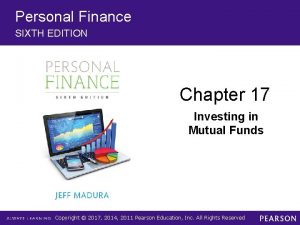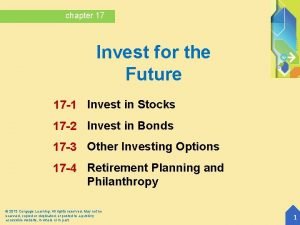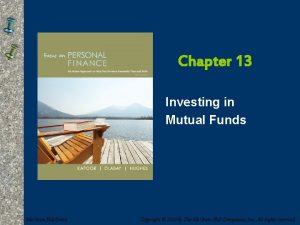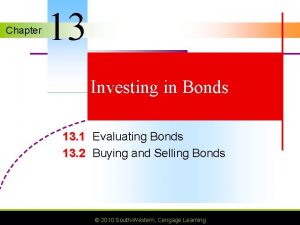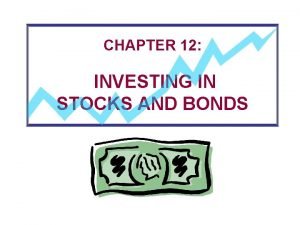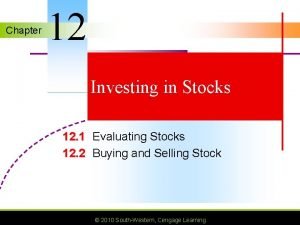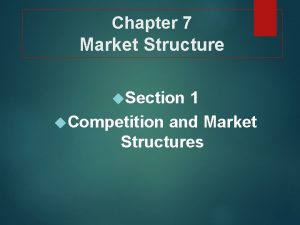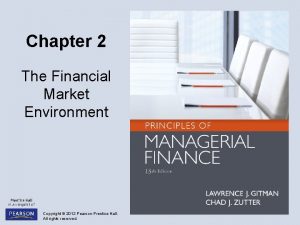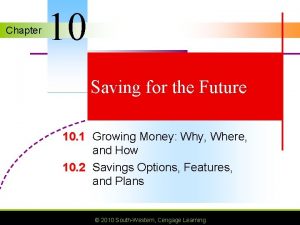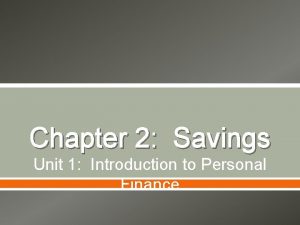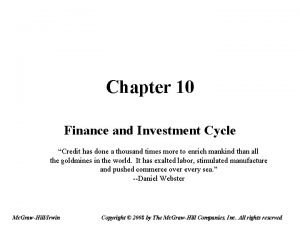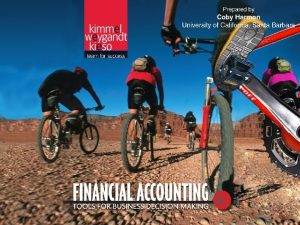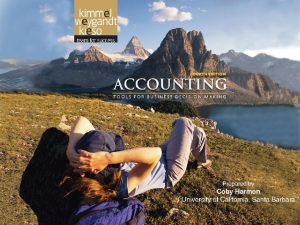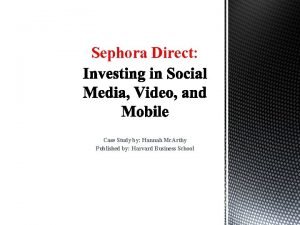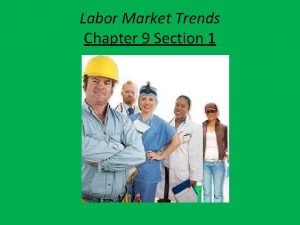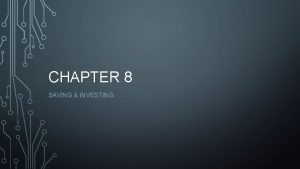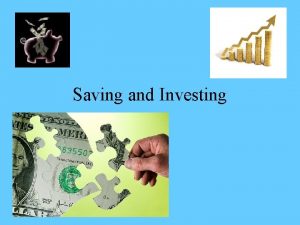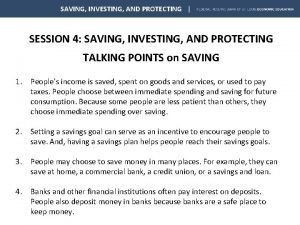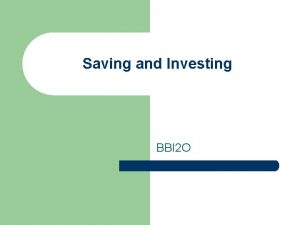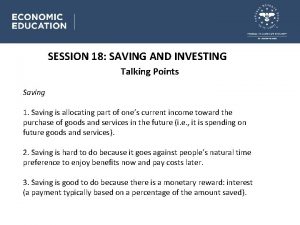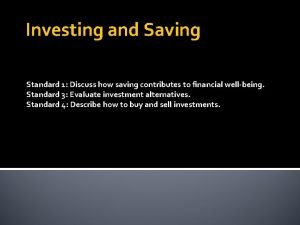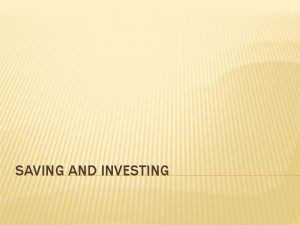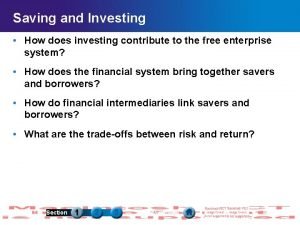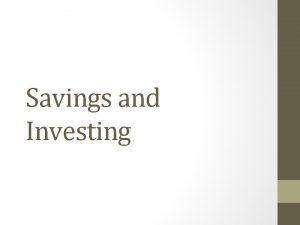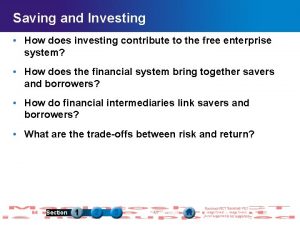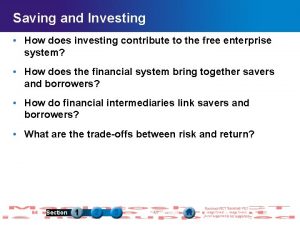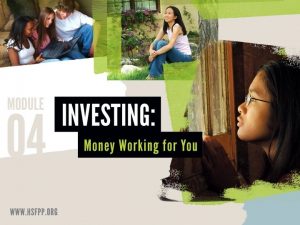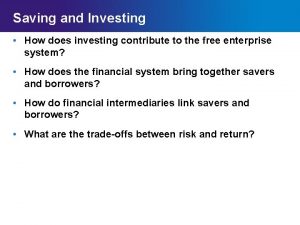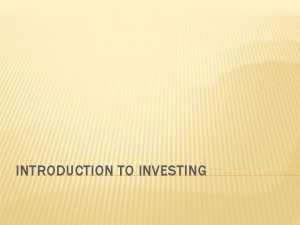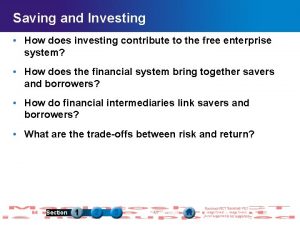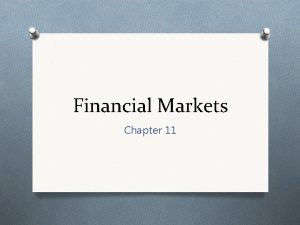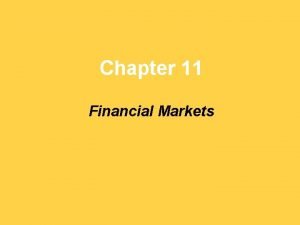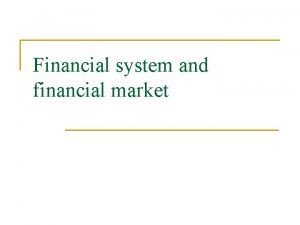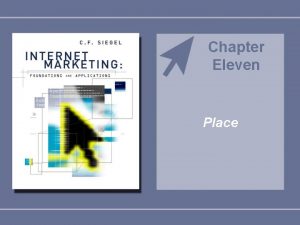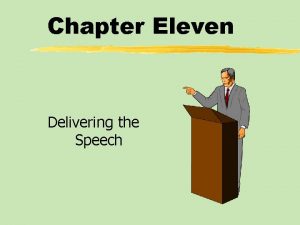Financial Market Chapter Eleven Saving and Investing Section






























- Slides: 30

Financial Market Chapter Eleven

Saving and Investing Section One:


Investing in Free Enterprise • Investment – The act of redirecting resources from being consumed today to create future benefits. • Investment promotes economic growth and contributes to a nation’s wealth. • Businesses use investments to expand hire new workers. • They then create new and better products to be consumed.

Markets Assets • Asset – A claim on the income or security of a borrower • If a borrower fails to pay back a loan, the assets can be claimed as repayment Flow of Savings • Financial Intermediaries act to link people who want to save money with those who want to borrow. • They include banks, finance companies, mutual funds, insurance companies and pension funds.

Financial Intermediaries

Types of Risk • Credit Risk – The borrower might not pay back the money or may make late payments • Liquidity Risk – You may not be able to convert the investment back to cash quickly enough • Inflation Risk – Inflation will erode the value of your investment • Time Risk – You may have to pass up on better investment opportunities

Sharing Risk • The strategy of spreading around risk to reduce risk is called diversification • Don’t put all of your eggs in one basket • Mutual funds automatically reduce the risk to investors by spreading around the risk.

Providing Information Portfolio – a collection of financial assets Prospectus – a report to investors that details potential risk and return to an investor

Risk and Return • Return is the money an investor receives beyond their original investment • The greater the risk of an investment, the greater the potential return • Low Risk Investment – Depositing money in an insured savings account or an insured Certificate of Deposit • High Risk Investment – Purchasing stock in a volatile company


Bonds and Other Financial Assets Section Two:


Bonds • Bonds – Are basically loans or IOU’s that represent debt by the government or a corporation. • Bonds are generally a a low risk investment • The more safe or stable the company or government, the lower the potential interest rate

The Three Components of Bonds 1. Coupon Rate – The interest rate that the bond issuer will pay the bond holder 2. Maturity – The time at which payment for the bond is due. -A Call Date offers the bond issuer the opportunity to repay the loan prior to the maturity date. 3. Par Value – the amount that an investor pay to purchase the bond

Rating Bonds • Two companies rate bonds based on credit worthiness • Moody’s and Standard and Poor’s • The higher the bond rating, the lower the interest rate

Types of Bonds Savings Bonds • Low denominations < $10, 000 issued by the US government to help pay for public works projects • Often given as gifts • You do NOT receive periodic interest payments Treasury Bonds • Higher denomination long term bonds backed by the full faith and credit of the US Government. • Generally considered to be the safest form of bond

Types of Bonds Municipal Bonds • Issued by municipal and state governments • Usually a fairly safe investment • Muni’s are tax exempt by both the federal and state level. Corporate Bonds • Corporations borrow money just like governments. • Corporate bonds are a more risky investment than government bonds because the have no tax base. • A special type of high risk corporate bond is a Junk Bond

Other Types of Financial Assets • Certificates of Deposit are similar to bonds but they are issued by banks • They come in a wide variety of values and lengths of time • CD’s have the added feature of being insured by the FDIC. • Money Market Funds are similar to savings accounts but are not insured by the FDIC. • In exchange for the increased risk, Money Markets pay a considerably higher rate of return than savings accounts.

The Stock Market Section Three:

Benefits of Buying Stock Dividends • Corporations pay out quarterly shares of the company’s profits • Income stocks pay dividends on a regular basis. Capital Gains • Growth stocks do not pay out dividends. They reinvest the profits into the company. • Because of the reinvestment, the company’s stock value should increase. • The shareholder makes a profit when he or she sells the stock.

Stock Splits • When the value of a single share of stock gets too high, the companies board of directors may split the stock • Divide up the stock into two or more less valuable shares • Bill Gates and Microsoft.

Risk of Buying Stock • Buying stock is a risky proposition because the firm cannot necessarily guarantee profits • Because individual companies are risky investment, they often pay much higher yields than bonds

Stock Terms • Stock Broker – Links buyers and sellers of stocks • Stock Exchange – A Market for the buying and selling of stock • NYSE – The New York Stock Exchange the largest stock market in the world • NASDAQ – Focuses on selling younger more high tech companies • OTC Markets – any other stock exchange

Stock Terms II • Bull Market – a steady rise in the stock market over time • Bear Market – a steady fall in the stock market over time • The Dow-Jones Industrial Average – An index of 30 large companies that is supposed to show the market as a whole is doing • The S & P 500 – An index of 500 large companies that illustrate how the market as a whole is doing.

Stock Terms III • Beta-Coefficient – a measure of a stocks volatility • P/E Ratio – A companies price per share divided by its earnings per share • Volume – the number of stocks traded during a given day.

The Great Crashes 1929, 1987 & 2008

The Great Crash 1. Buying on the margin – Using credit to purchase stocks 2. Margin Call – Required cash payments to cover debts 3. Bank involvement – Banks were deeply involved in the stock market

The Great Crash II 1. October 28, 1929 – Black Tuesday 2. The Crash did not cause the great depression but it did aggravate many of the problems.

Outcomes of the Crash • SEC – Securities and Exchange commission formed - Responsible for regulating stock market • Margin buying limited • Banks no longer allowed to invest in stock market
 Chapter 10 basics of saving and investing
Chapter 10 basics of saving and investing Chapter 10 basics of saving and investing
Chapter 10 basics of saving and investing Chapter 6 saving and investing
Chapter 6 saving and investing Lesson twelve saving and investing
Lesson twelve saving and investing Guided reading activity 6 1 why save economics answers
Guided reading activity 6 1 why save economics answers Explain the investment poem concerning stocks and bonds.
Explain the investment poem concerning stocks and bonds. Explain the difference between saving and investing
Explain the difference between saving and investing Direct investing vs indirect investing
Direct investing vs indirect investing Chapter 26 saving investment and the financial system
Chapter 26 saving investment and the financial system Saving, investment, and the financial system
Saving, investment, and the financial system Saving investment and the financial system
Saving investment and the financial system Segmentation targeting positioning
Segmentation targeting positioning Leader challenger follower
Leader challenger follower Chapter 11 investing for the future
Chapter 11 investing for the future Chapter 4 analyzing investing activities solutions
Chapter 4 analyzing investing activities solutions Chapter 17 investing in stocks
Chapter 17 investing in stocks Chapter 17 investing in stocks
Chapter 17 investing in stocks Chapter 13 investing in mutual funds
Chapter 13 investing in mutual funds Chapter 13 investing in bonds
Chapter 13 investing in bonds Chapter 12 investing in stocks
Chapter 12 investing in stocks Chapter 12 investing in stocks
Chapter 12 investing in stocks Lesson quiz 7-1 market structures
Lesson quiz 7-1 market structures The financial market environment chapter 2
The financial market environment chapter 2 Chapter 10 saving for the future
Chapter 10 saving for the future Section 2 three basic reasons to save money
Section 2 three basic reasons to save money Non financial methods of motivation
Non financial methods of motivation Finance and investment cycle
Finance and investment cycle Statement of cash flows indirect method
Statement of cash flows indirect method Operating activities indirect method
Operating activities indirect method Sephora case study
Sephora case study Section 1 guided reading and review labor market trends
Section 1 guided reading and review labor market trends
